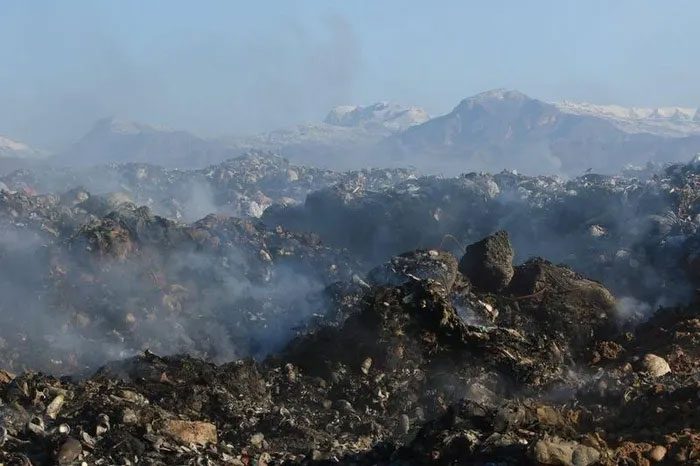A new study has discovered that the decomposition of food waste is releasing thousands of tons of methane gas that warms the planet at landfills in various locations such as Buenos Aires (Argentina), Delhi, Mumbai (India), and Lahore (Pakistan).
According to the U.S. National Oceanic and Atmospheric Administration, approximately 570 million tons of greenhouse gases are emitted each year from industrial and natural processes, with methane concentrations in the atmosphere rising at a record pace.

Waste collected from an area that was once a landfill will be transformed into a green park in Zakho, Dohuk Province, Iraq. (Photo: REUTERS).
In some countries, the largest sources of methane emissions are agricultural fields and livestock, particularly cattle, but also include other livestock and poultry. In the U.S., the oil and gas industry is primarily responsible.
However, there is another significant source of emissions globally: waste.
Data from a satellite-mounted detector indicates high concentrations of methane in cities across India, Pakistan, and Argentina. A group of scientists conducted a closer examination to identify the emission sources.
According to research published on April 10 in the journal Science Advances, high-resolution satellite images taken in 2020 showed methane rising from landfills due to wind in Argentina’s capital Buenos Aires, as well as in the Indian cities of New Delhi and Mumbai, and Pakistan’s second-largest city, Lahore.
For example, the study found that a landfill in Mumbai emits about 9.8 tons of methane per hour, equivalent to 85,000 tons annually. The Buenos Aires landfill produces approximately 250,000 tons of methane each year, accounting for half of the city’s total methane emissions.
Co-author Joannes Maasakkers, an environmental scientist at the Netherlands Institute for Space Research, stated: “These observations can inform us about where large methane emissions occur and where mitigation actions can be taken.” Mitigation steps may include composting food waste or capturing methane for biogas.
According to the World Bank, landfill waste accounts for about 11% of global methane emissions, which are expected to increase by approximately 70% by 2050 as the global population continues to rise.
Since methane is 80 times more potent than CO2 over a 20-year period, reducing “current methane emissions could have an immediate impact on climate change,” Maasakkers noted.
Previously, estimates of landfill emissions were based on the volume of landfills and assumed decomposition rates.
Professor Jean Bogner, an environmental scientist at the University of Illinois who was not involved in the study, remarked that satellite technology is a driving force for scientists. This new approach helps “fully capture the specific emissions at the site, as emissions from landfills can vary depending on everything from land conditions to whether mitigation measures are applied.”


















































